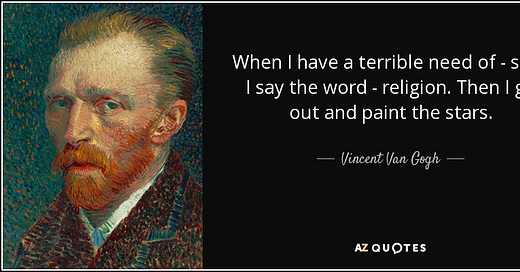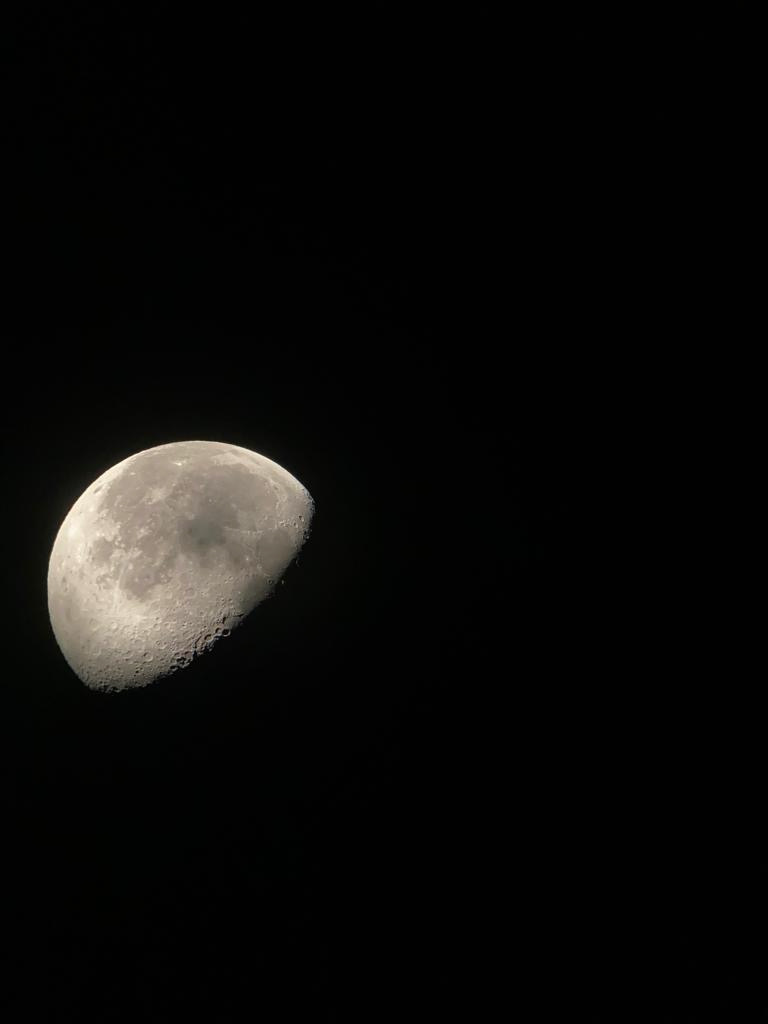Hola Global Jigsaw Friends,
For millennia, to be human is to have looked up at star-filled night skies and dreamt. The stars have been foundational to religions as much as science. They have fueled the verses of poets, and the investigations of physicists. They have been our guide to time and space, fundamental to navigation and calendars. To look up at the night sky has been to search for meaning.
These glittering celestial objects have lit up language too. We talk of being starry-eyed, having star-crossed lovers, and of things being written in the stars. People who are successful, are stars in their fields. And when we are ambitious, we aim for the stars.
But, almost without comment, the majority of the world’s population - those who live in urban conglomerations - have lost the stars. Chances are that if you look up tonight, all that will be visible is a semi-dark fug that reflects the electric lights of the urbanscape. Star light, which takes millions of years to reach us from the infinite beyond, is blocked in the last milliseconds of its journey by the light “pollution” from homes, parking lots, office buildings, and streetlamps. For most humans today, the spilt milk ocean of glitter– the real night sky – is something they have heard about, rather than seen firsthand. Astronomers have even coined a phrase for the phenomenon of “night grief,” noctalgia, for it is painful to lose the stars.
So, imagine our sense of awe as our little band of astro-adventurers gazed up into a deep-black sky, foregrounded by a dense forest of twinkling jewels. The breath caught in the throat. Tears threatened the eye, in part because of the blistering winter-cold, but also because when confronted with beauty on this scale, the body cannot help but react viscerally.
Our group of seven tourists, were gathered by the ruins of the fifteenth century fortress of Trevejo, on Spain’s western border with Portugal, nestled among a range of hills called the Sierra de Gata. It took an effort to get there. The area is over 300 kilometers from the capital, Madrid and there is no airport or major train station in the vicinity.
There was something atavistic about the countryside surrounding Trevejo; a place of olive groves and endless horizons. We counted more bulls than people. It was early December when we visited, and the nights were icy. We wore water-proof boots, warm hats and gloves. But even then, the cold seeped through to the bones. But far from being a distraction, this bodily discomfort transformed into a clarity; a sense of being alive more vital than the norm in our day-to-day urban lives.
We drank in the Milky Way’s magnificence with the naked eye. It was impossible to lift your face up to the starry canopy and not feel the soul rise in tandem, even if like me, you are not all that convinced about souls in general. The night sky is a sacred place, and it felt bordering on blasphemous to remain unmoved by it. There was solace here for anyone feeling wretched and forsaken.
Image taken from : https://astrogata.com/
Our leader in this escapade was a small local outfit, Canopea, that specializes in astro-tourism. A husband and wife team, they hauled two gigantic telescopes out to the rocky craig upon which clung the ruins of Trevejo castle. Through these we feasted upon lunar craters and even distant Saturn’s magical rings. In this space there were no regrets or anxieties because the glory of the present took up all our mental space. You cannot gaze on Jupiter’s moons and worry about taxes at the same time.
Image: My son’s iphone photo of the moon
An hour and a half into this immersive, real-life planetarium, a flask of hot chocolate was conjured up by the Canopea team. To sit beneath the Milk Way with a cup of hot chocolate is a luxury greater than any material possession I could think of.
The area around Trevejo is at about a three on the nine-level Bortle dark-sky scale, a numeric measure that quantifies the interference caused by light pollution to the observability of celestial objects. A rating of one equates the darkest skies available on Earth, while inner-city skies are usually classified as a nine.
There is a growing body of scientific research on the devastating health and ecological impact of light pollution, which can rival those of better known environmental problems like air and water contamination. The loss of the night sky impacts the circadian rhythms of humans, causing sleep and mental disorders, in addition to disrupting the migratory patterns of animals.
But at an even deeper level, to lose the stars is to lose something of the magic of the universe; something that has connected all humanity as we sheltered under the same skies, looking up and imagining what lay beyond.
Spending time under a truly starry night in Trevejo, was more rejuvenating than a visit to an expensive detox spa. And going forward, I’m going to ditch gastro-tourism for astro-tourism. Feasting on the stars is lighter on the wallet and the waist.
That’s all for this week, folks. Could I please ask you to become a paid subscriber? I keep most posts, and almost three-years worth of archival material, free to read. There is a reward to simply writing and being read. But earning one’s way through life is one of those annoying necessities too. It is how the world values one’s output and ends up being a measure, good or bad, of self-worth.
And as they say, there’s no such thing as a free lunch - although the Global Jigsaw is as near to one as you’re likely to get! Do subscribe and share.
Un beso,
Hasta pronto,
Pallavi








Dear Pallavi,
you never lived south of the Equator, and it tells. Down under, the number of stars in the sky is four times that of the North. You can pluck star clusters like grapes from a pergola.
Now imagine yourself in a perfect setting - no light pollution at all. The *noise* of just one car rolling through will destroy the perfection. That's the killer pollution.
Aldo